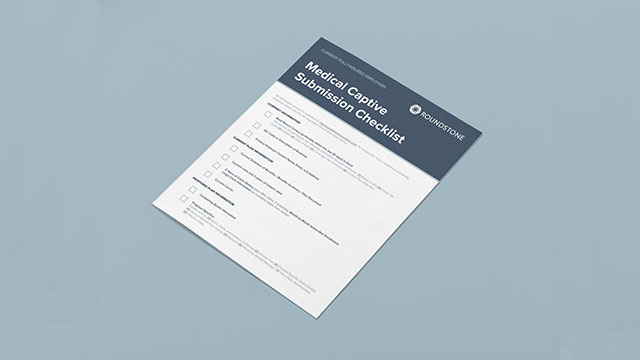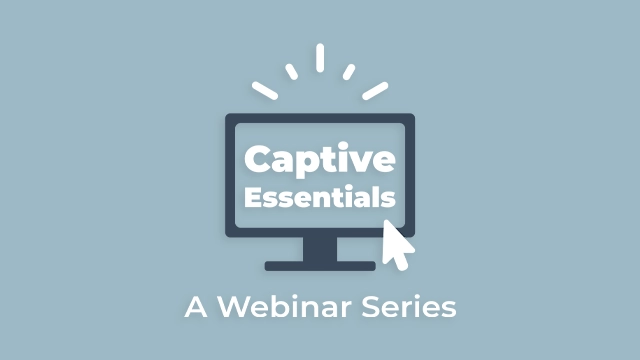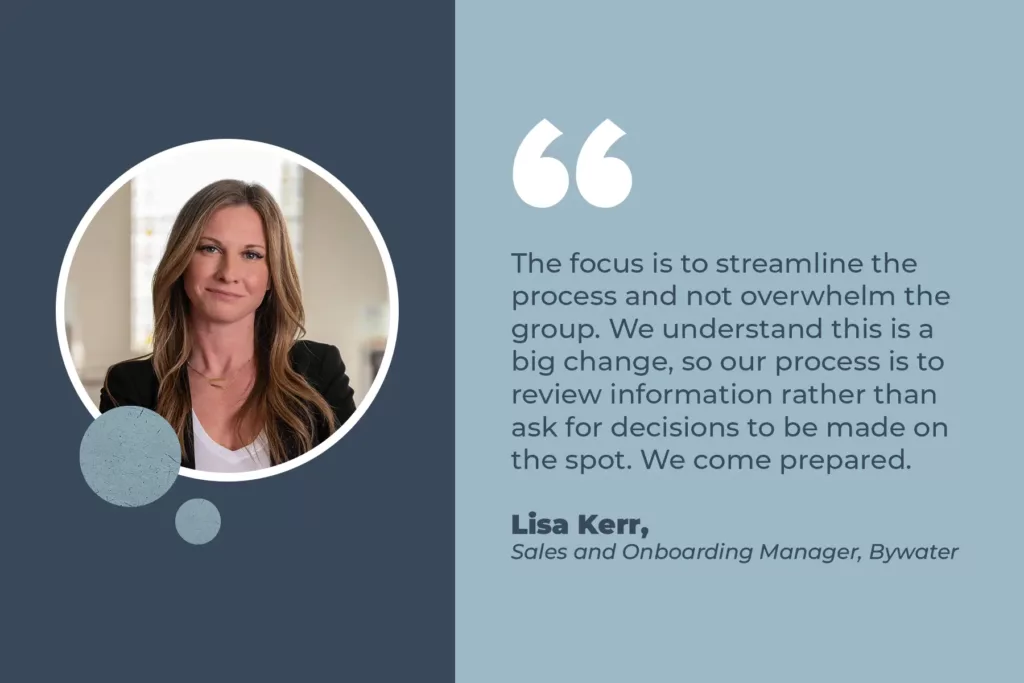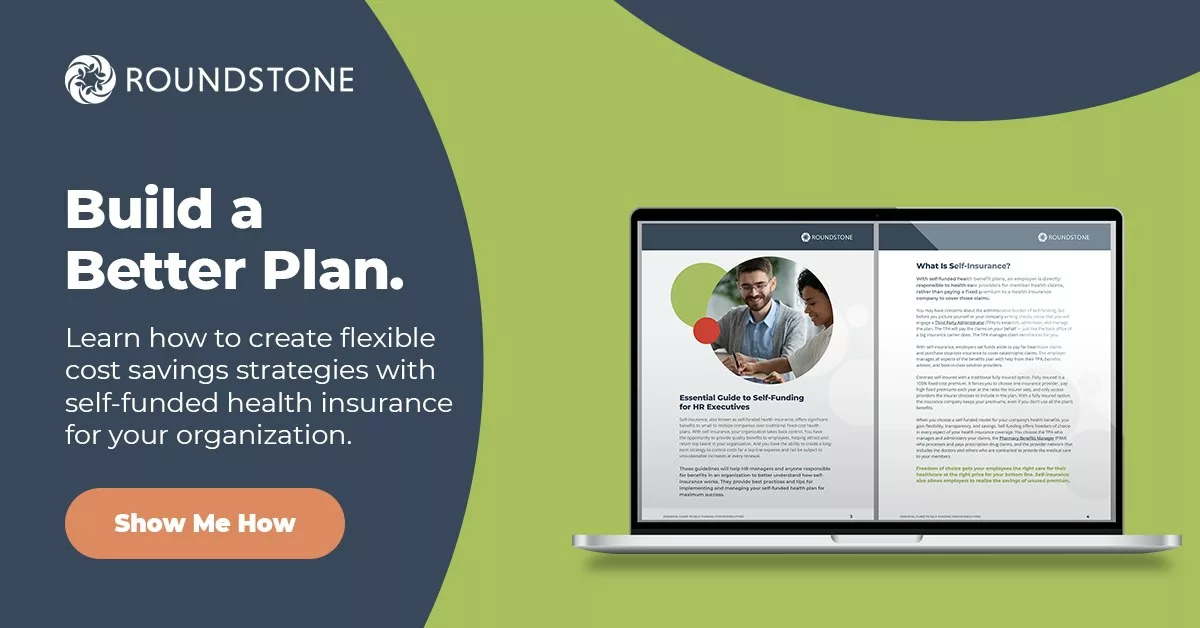Highlights
- Understanding the onboarding process for a self-funded health insurance plan will ease the transition when switching from a fully insured health plan.
- Smooth onboarding requires a supportive, proactive team, including your benefits advisor, Third-Party Administrator (TPA), and Pharmacy Benefits Manager (PBM), to optimize the experience in the Roundstone Captive.
- Self-funded insurance plan onboarding best practices, such as transparent communication, clear expectations, and comprehensive training and education, can ensure successful plan implementation.
Transitioning to a new health benefits plan can be a significant decision for an organization. The last thing any HR team wants is disruption and noise from employees and members. A poor onboarding experience not only frustrates your employees, but threatens the success of the plan itself.
So, to help you make the switch from fully insured to self-insured, we have put together some guidelines of what to do — and most important, what NOT to do — to ensure success with your self-funded health plan. The good news is that with a thoughtful and organized onboarding process, your members will happily engage with a new and improved health plan in no time. That’s great for your employees, and it’s awesome for company morale and your retention rate.
Recently, we talked to Lisa Kerr, Sales and Onboarding Manager for Bywater, Roundstone’s in-house TPA, to uncover the best and worst practices for onboarding a self-funded insurance plan. Lisa’s insights provide valuable knowledge and advice to help you make a smooth transition to a self-funded insurance plan for your employees.
Meet Lisa Kerr: Our Expert in Health Plan Onboarding
Lisa is a seasoned professional with a wealth of knowledge in the field. In addition to onboarding new business for Bywater, she is actively involved with the sales team and supports them and benefits advisors throughout their self-funding journey. This dual role allows her to have a holistic view of the entire process, from the decision to move forward through onboarding and on to implementation.
Onboarding Process for a Smooth Transition to a Self-Funded Benefits Plan
The onboarding process is a critical phase in transitioning to a new health benefits plan.
“The onboarding process takes about 30 to 45 days,” Lisa explains. “We begin implementation by gathering information on the group that was provided during the RFP intake process. Using our resources in addition to getting details from the group’s advisor prior to our first meeting is essential. This allows us to get an understanding of the group’s new health plan and build the plan in advance of meeting with the group. The focus is to streamline the process and not overwhelm the group. We understand this is a big change, so our process is to review information rather than ask for decisions to be made on the spot. We come prepared.”
This proactive approach is a testament to Lisa’s thoroughness and commitment to ensuring that all parties are well informed and on the same page.
Timing Matters
“It’s important for the onboarding call with the TPA and the pharmacy benefit manager (PBM) to be done prior to employee’s open enrollment,” Lisa emphasized. “Decisions should be made in advance so employees get ample time to be fully informed with time to choose the plan that best fits their needs and the needs of their family. A TPA should be able to produce all of the necessary materials and benefit summaries to HR in order for the group to be prepared to deliver benefits with confidence during open enrollment prior to the group going live.”
This insight speaks to the importance of careful planning. Working with a prepared and experienced TPA ensures a smooth transition without heavy lifting on the part of HR or management.
Tools for Success: Resources for Successful Onboarding to a Self-Insured Plan
Having the right resources at your disposal can make the onboarding process significantly easier. To help companies navigate this process, Lisa and her team provide a range of resources.
“We provide member materials and have an administrator portal for HR. We include all of the supporting member materials and plan summaries on the administrator and member portal so it’s easily accessible for all,” Lisa explained.
Proactive planning, clear communication, and being available to support all employee questions are critical and ensure companies have easy access to the information they need during the transition, allowing them to focus on making the transition as seamless as possible.
Best Onboarding Practices When Transitioning to a Self-Funded Health Plan

Drawing from her wealth of experience, Lisa shared some crucial best practices to help guide any organization through a successful onboarding process for a self-funded health plan.
Team Alignment and Advisor Engagement
“The most important best practice is to have everyone aligned as a team,” Lisa said, emphasizing the importance of having a cohesive team for a successful transition. A well-coordinated team, where everyone understands their roles and responsibilities, can make the transition process more efficient and less stressful.
Investment in Current Clients and Data Utilization
Lisa suggests that focusing on the clients and making data-driven decisions can lead to better outcomes and client satisfaction in a self-funded health plan. “We need to always invest in the clients that are in-force as much as we look ahead to new business,” she said. This customer-centric approach, coupled with evidence-based decision-making, is a powerful strategy for success.
Quality of the TPA for the Successful Onboarding of a Self-Funded Health Plan
“The quality of the TPA can make or break the onboarding process,” Lisa shares, underlining the importance of selecting a quality TPA. A competent and reliable TPA can greatly ease the transition process, ensuring that the group is set up in a timely fashion, plan builds and documents are complete, allowing members to use their benefits and all claims are processed efficiently, in a timely manner.
Customer Service Excellence
Lisa underscores the importance of quality customer service from the TPA: “Yes, timely and accurate responses are essential. If members are unhappy, it will immediately create noise on multiple fronts.” When issues arise — and there will be issues — what matters is how you respond and how you get to the resolution.
Speedy response times and high-quality service not only ensure good member experience but also contribute to overall client satisfaction.
Onboarding Pitfalls to Avoid
Lisa warns against some practices to avoid during the onboarding process that can derail the transition to a new health benefits plan.
These pitfalls can include:
Last-Minute Decision-Making
Lisa emphasizes the importance of planning and starting the onboarding process 30 to 45 days before a plan goes live. Adequate preparation time allows for proper communication and education of employees, ensuring that they understand and are comfortable with the new plan. “If a group makes a last-minute decision to switch their health plan — no matter what it is — they’re not giving themselves enough time to properly inform their employees,” she warns.
Advisor Apathy
An advisor’s role is critical to a smooth transition and should go beyond just providing a quote. They should be actively involved in the transition process, providing support, advice, and reassurance to the client. “A negative practice I see is when the advisor is hands-off,” Lisa says. “The client needs to feel comfortable and supported by and with their advisor.”
An understanding of what makes a good benefits advisor is an important first step in setting up your self-funded benefits plan.
Inefficiency of the TPA
Lisa warns about the inefficiency of some TPAs and emphasizes the need for a TPA that can efficiently handle the demands of the transition. “For example, we have TPAs that have taken more than six months to get a summary plan document (SPD) draft to a group,” she said. Lisa stresses that delays like this can lead to dissatisfaction and unnecessary complications. A TPA should not be processing claims until a final SPD is fully executed. A delayed SPD can and will prevent timely processing of claims and payment to providers.
It Takes a Team: Smooth Insurance Onboarding and Support

Transitioning to a self-funded health plan doesn’t have to be intimidating. With the right preparation, a dedicated team, and a quality TPA, your members can enjoy the benefits of a new and improved health plan.
With Roundstone, a team of experts guides you through the onboarding process to the world of self-insurance, from choosing a TPA and PBM to plan design and ongoing utilization. We make it simple.
Our transparent communication, professional partnerships, and exceptional customer service provide a positive onboarding experience and continued benefits plan support.
Contact us today to start your journey toward affordable self-funded insurance for your employees.

















